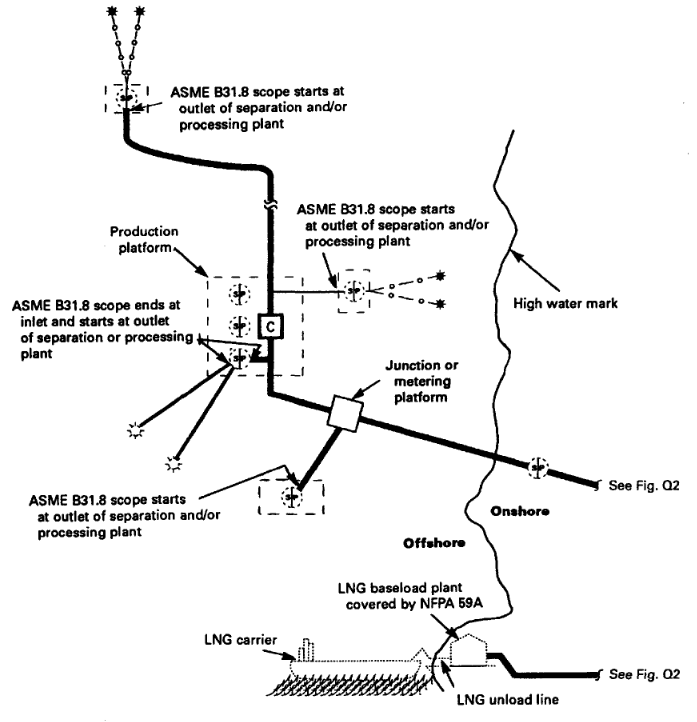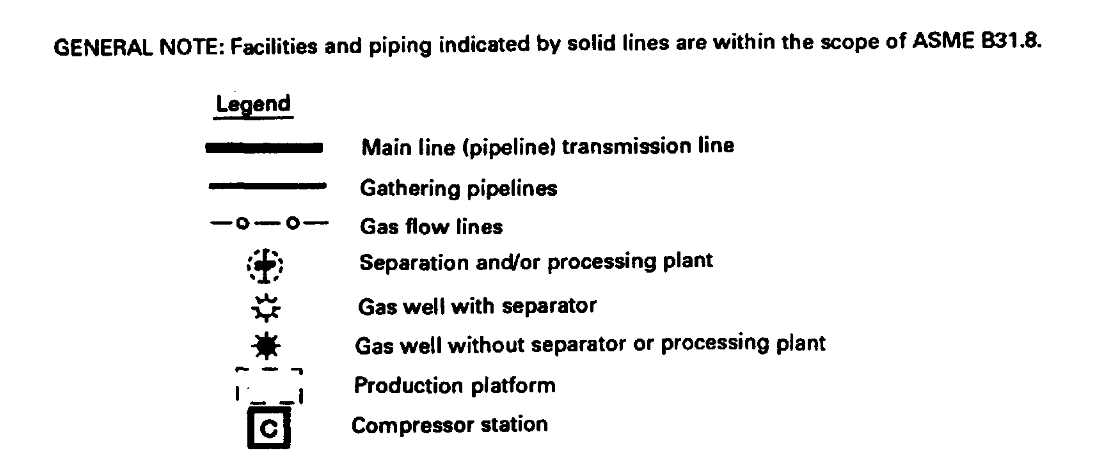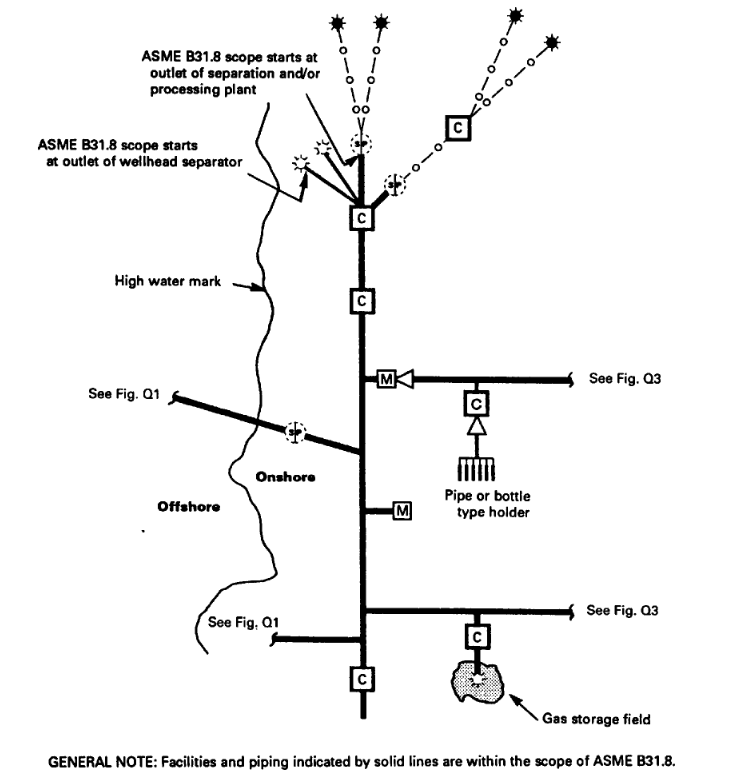This article is about Download ASME B31.8 Gas Transmission And Distribution Piping Systems, Piping System Components and Fabrication Details, ASME Standards and focusing to the engineers, technicians and supervisors. You will find lot of documents related to this article. Just navigate our website www.paktechpoint.com and find more articles. Please! Do not forget to subscribe our You tube channel also. Thanks in Advance.
![DOWNLOAD ASME B31.8 GAS TRANSMISSION AND DISTRIBUTION PIPING SYSTEMS Gas Transmission and Distribution Piping Systems | ASME B31.8 [PDF]](https://paktechpoint.com/wp-content/uploads/2020/03/img_5e60e0dc11ffb.png)
Please wait if book is not loaded…………………..
ASME B31.8 Gas Transmission and Distribution Piping Systems
The intricate network of pipelines crisscrossing our cities and traversing vast landscapes carries a precious cargo – natural gas. This invisible energy source fuels our homes, powers industries, and drives economic growth. Ensuring the safe and efficient transportation of natural gas is of paramount importance, and that’s where the American Society of Mechanical Engineers (ASME) B31.8 code steps in. In this comprehensive article, we delve deep into ASME B31.8, exploring its significance, key components, applications, and the vital role it plays in the world of gas transmission and distribution.
Understanding ASME B31.8
ASME B31.8 is a set of codes and standards created by the American Society of Mechanical Engineers. It is officially titled “Gas Transmission and Distribution Piping Systems.” This code serves as a comprehensive guide for the design, construction, operation, and maintenance of pipelines used for the transmission and distribution of natural gas. ASME B31.8 is meticulously crafted to ensure the safety and reliability of natural gas pipelines, protecting both people and the environment.
Key Components of ASME B31.8
To comprehend the importance of ASME B31.8, let’s break down its key components:
1. Design and Construction
ASME B31.8 provides in-depth guidelines for the design and construction of gas pipelines. It covers aspects such as pipeline layout, material selection, welding procedures, corrosion protection, and structural integrity. These guidelines are essential for ensuring that pipelines can withstand the pressures, stresses, and environmental factors they encounter during their operational lifespan.
2. Material Selection
The code outlines stringent requirements for the materials used in gas pipelines. It specifies the types of materials suitable for various operating conditions and the quality control processes needed to maintain the integrity of these materials.
3. Safety Measures
Safety is a paramount concern in gas transmission and distribution. ASME B31.8 mandates the implementation of safety measures, including pressure testing, leak detection, and emergency shutdown systems. It also addresses the design and location of pressure relief devices to prevent overpressure situations.
4. Operation and Maintenance
Beyond construction, the code emphasizes the importance of proper operation and maintenance. This includes regular inspections, integrity assessments, corrosion prevention measures, and protocols for repairing or replacing pipeline components.
5. Environmental Considerations
With growing environmental awareness, ASME B31.8 incorporates provisions for environmental protection. It outlines procedures for spill containment, cleanup, and measures to prevent soil and water contamination in the event of a gas leak.
6. Regulatory Compliance
Gas pipelines must comply with a myriad of federal, state, and local regulations. ASME B31.8 helps pipeline operators navigate this complex regulatory landscape, ensuring full compliance and adherence to safety standards.
Applications of ASME B31.8
ASME B31.8 finds applications in various sectors, including:
1. Natural Gas Utilities
Natural gas utilities and distribution companies rely on ASME B31.8 to design, construct, and maintain the extensive networks of pipelines that deliver gas to homes, businesses, and industries.
2. Industrial Facilities
Industries that use natural gas as a fuel source or feedstock follow ASME B31.8 to establish on-site gas distribution systems, ensuring a stable and safe gas supply.
3. Oil and Gas Industry
In the oil and gas sector, ASME B31.8 governs the transportation of natural gas from production fields to processing facilities, distribution centers, and export terminals.
4. Environmental Considerations
ASME B31.8’s focus on environmental protection is crucial in environmentally sensitive areas, such as wildlife habitats and water sources, where pipeline safety is paramount.
5. Expansion Projects
When expanding gas transmission and distribution networks, ASME B31.8 serves as a guide for engineers and project managers, ensuring the integration of new pipelines with existing infrastructure.
Conclusion
ASME B31.8 is more than just a code; it’s a guardian of safety and reliability in the world of gas transmission and distribution. Its meticulous guidelines and standards serve as a blueprint for the design, construction, operation, and maintenance of gas pipelines. As we continue to rely on natural gas as a clean and efficient energy source, ASME B31.8 remains an essential tool in safeguarding our energy lifeline, protecting communities, and preserving the environment. In a world where energy security is paramount, ASME B31.8 stands as a sentinel, ensuring the uninterrupted flow of natural gas to power our lives and industries.
This book is offering details as mentioned following chapter wise.
In First Chapter of this book offers
- Materials and Equipment
In 2nd Chapter of this book includes information
- Qualification of Materials and Equipment
In 3rd Chapter of this book covers
- Material Specifications
In 4th Chapter of this book is comprehensive guide
- Conditions for the Reuse of Pipe
- Qualification of Procedures and Welders
In 5th Chapter of this book describes
- Repair or Removal of Defective Welds in Piping Intended to Operate at 20% or More of the Specified Minimum Yield Strength.
In 6th Chapter of this book develops
- Piping System Components and Fabrication Details.
In 7th chapter of this is discussing about
- Piping System Components and Fabrication Details
- Supports and Anchorage for Exposed Piping
- Design. Installation. and Testing
- Pipe-Type and Bottle-Type Holders
- Offshore Gas Transmission
- Conditions for the Reuse and Requalification of Pipe
- Sour Gas Service
TABLE 841.114B DESIGN FACTORS FOR STEEL PIPE CONSTRUCTION:

TABLE 841.322(f) TEST REQUIREMENTS FOR PIPELINES AND MAINS TO OPERATE AT HOOP STRESSES OF 30% OR MORE OF THE SPECIFIED MINIMUM YIELD STRENGTH OF THE PIPE
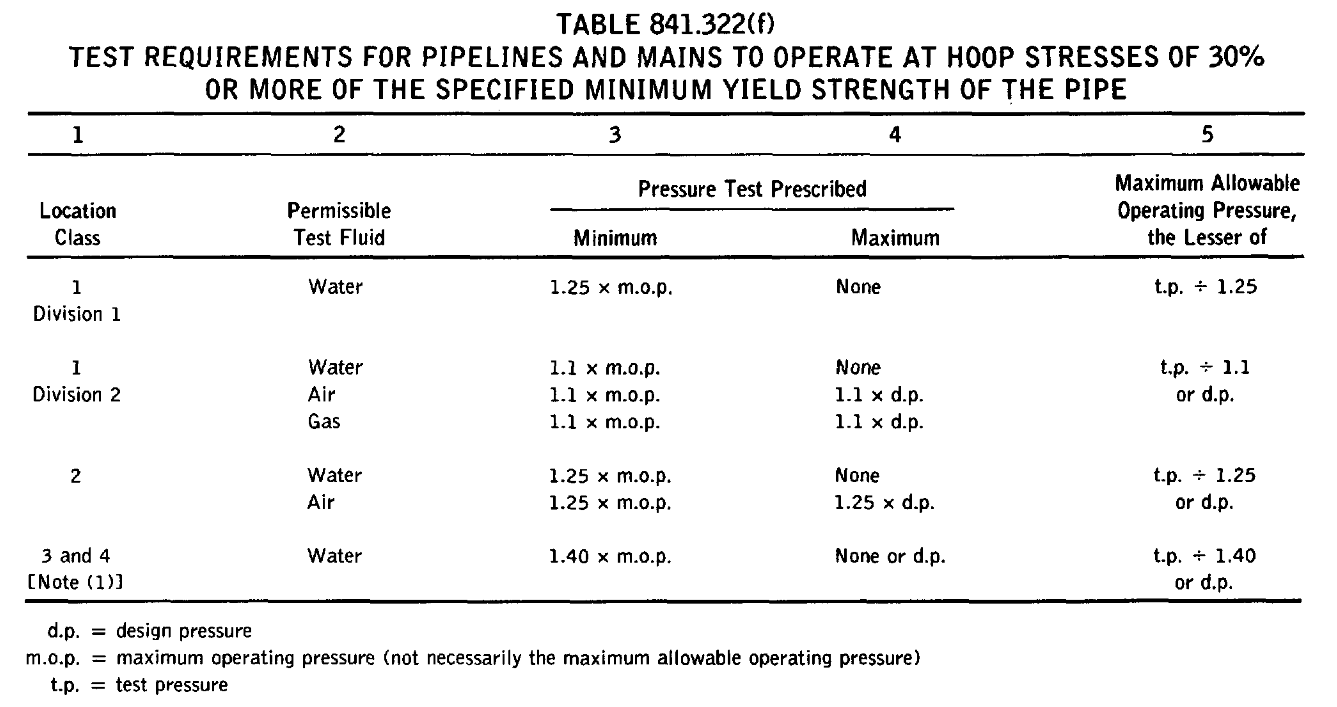
TABLE 842.214 STANDARD THICKNESS SELECTION TABLE FOR DUCTILE IRON PIPE
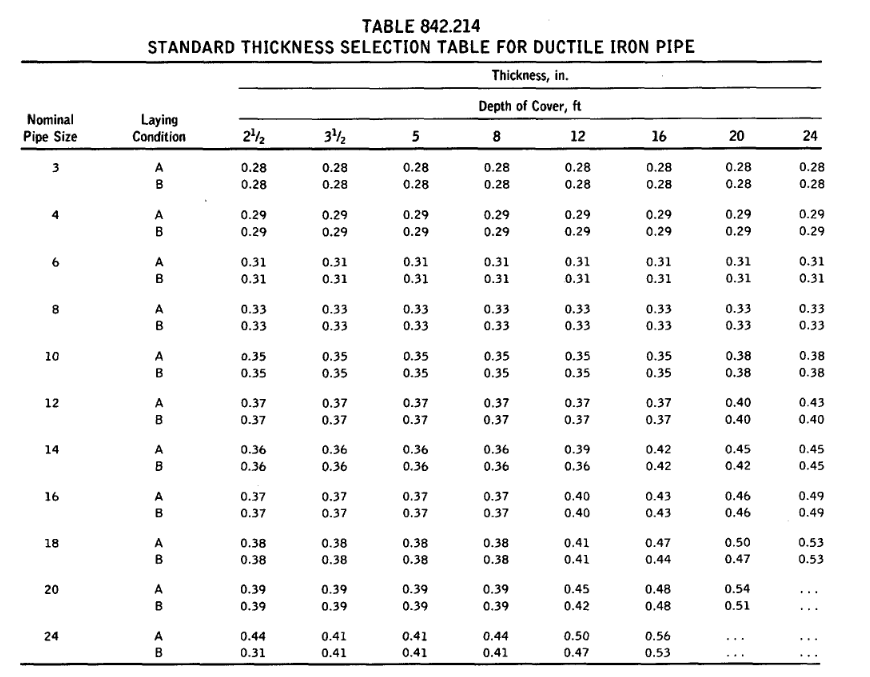
TABLE 854.1 (C)
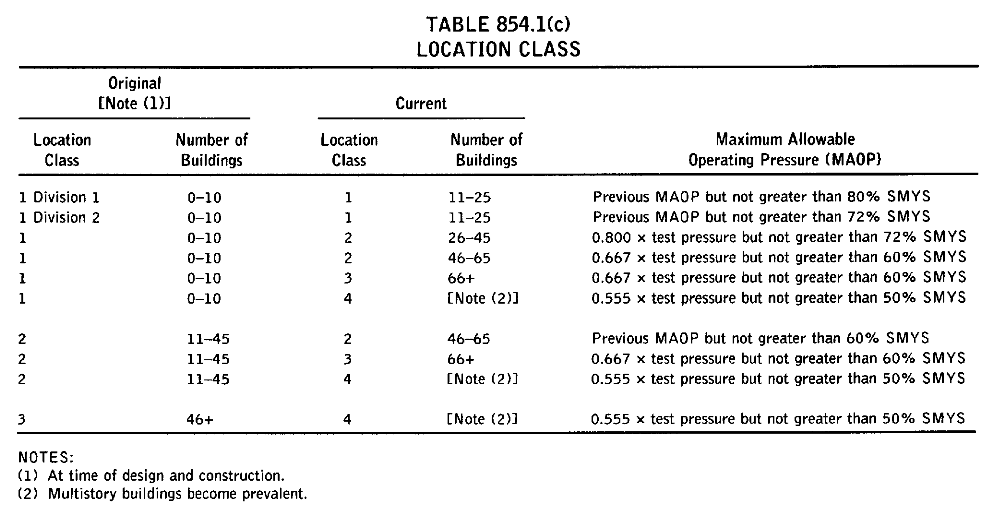
SPECIFIED MINIMUM YIELD STRENGTH FOR STEEL PIPE COMMONLY USED I N PIPING SYSTEMS (CONT’D)
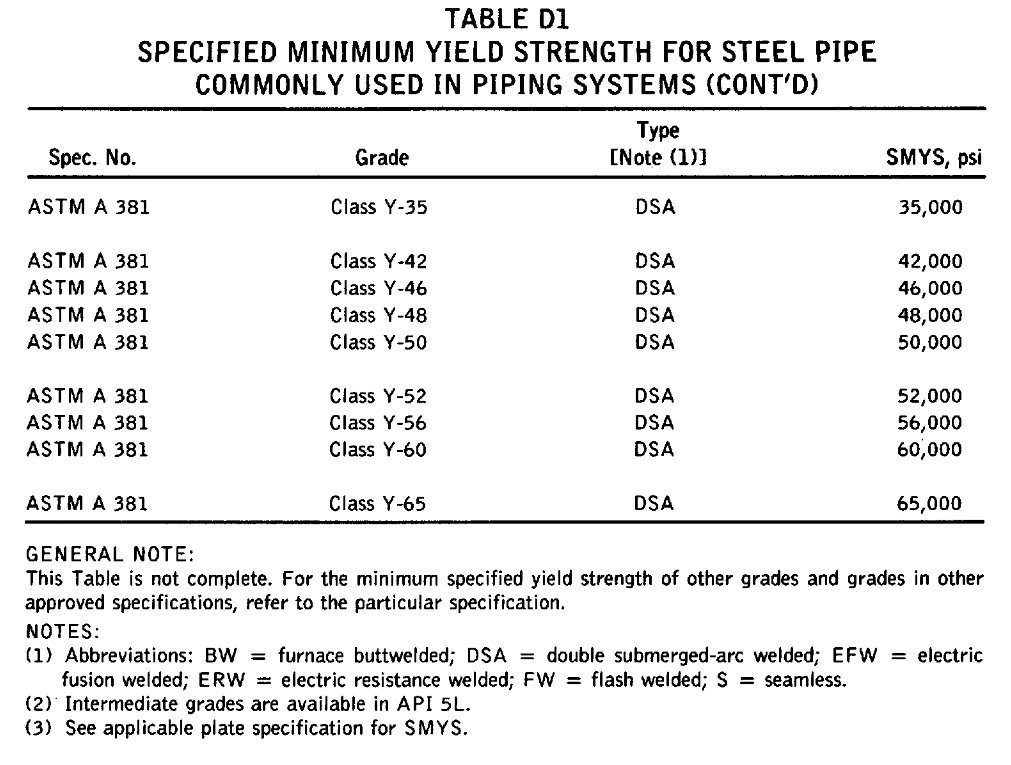
SCOPE OF ASME B31.8 TRANSMISSION PIPING OFFSHORE
